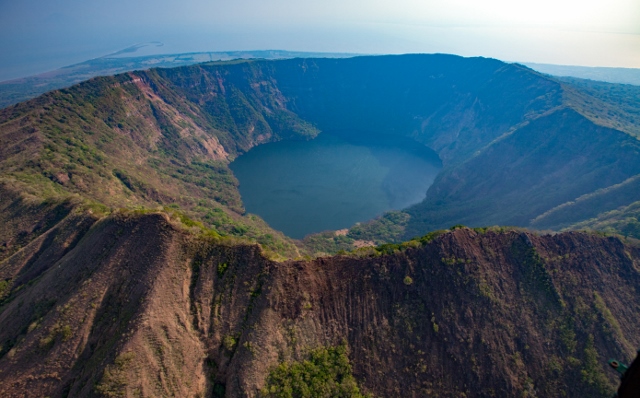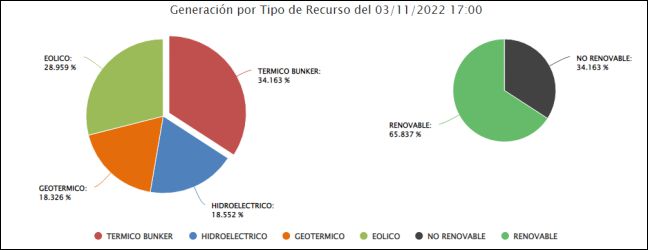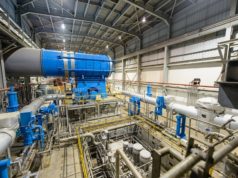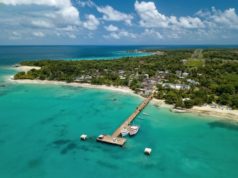
The Government of Nicaragua and the Inter-American Development Bank (IDB) are inviting interested parties to bid on a tender for “Exploratory studies and drilling at the Cosigüina Volcano geothermal area located in the furthest North West point of the Central American country. (Source: Inter-American Development Bank)
The formal title of the tender document is: LPI-01-OBRAS-2022-PEG-MEM “Drilling of wells and Exploratory Studies in the Volcán Geothermal area”.
Last year, Nica-Biz reported that a contract (funded by the Japan International Cooperation Agency or JICA) for the “pre-feasibility studies and the preparation of exploratory drilling” in the Cosigüina Volcano Geothermal Area had been awarded locally.

CNDC Graphic showing that at 5pm on Thursday November 3rd 2022, over 65% of Nicaragua’s electricity was being produced by renewable energy sources.
Nicaragua “The Land of Lakes and Volcanos”
An expression often used to describe Nicaragua in the context of tourism; however, it’s equally applicable in the context of its renewable energy electricity production.
Nicaragua is blessed with a variety of renewable energy options. The chain of volcanos that form part of the “Ring of Fire” also include huge geothermic resources. In addition, rainfall feeds man-made lakes for hydro-electric production, the sun provides solar and the power of the wind has been harnessed by several wind farms.
More recently, Nicaragua’s sugar cane has indirectly provided a year to date figure of 14.8% of the nation’s electricity from the waste product or “Biomass” of its ever increasing sugar cane crop which is used as a cleaner burning fuel to produce electricity. Source: The National Load Dispatch Center (CNDC)
Geothermic Energy
The geothermic energy taps into the heat of the earth’s magma and uses it to heat water which creates steam to power the turbines and create electricity. Because the steam is in sealed unit, it can cool back into water and be re-used (re-heated) by the magma, hence it’s known as an “inexhaustible source of clean energy”.
Nicaragua hopes to expand its existing renewable energy portfolio and add to the success of the San Jacinto-Tizate Geothermal Project at Telica in the Department of León.
Another existing renewable energy project is at Momotombo Volcano, 40 km northwest of the City of Managua on the shores of Lake Managua which has been in operation since 1983.
The Mombacho Volcano near Granada is also being studied as a source of geothermal energy.






